Text






Syntagma Square, 2021
Merry Christmas from Athens!
Καλά Χριστούγεννα!
#christmas#merry christmas#christmas 2021#athens#syntagma#athens christmas#greece#christmas tree#christmas decorations
19 notes
·
View notes
Text
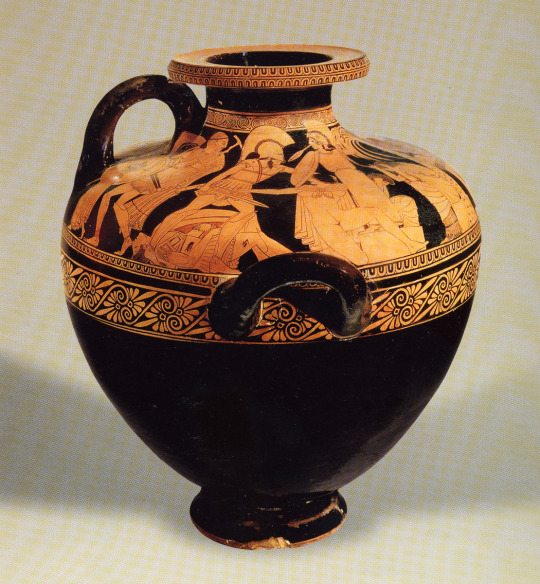


*Pics from Classical Art Research Centre, University Of Oxford
Hydria with the Sack Of Troy by Kleophrade's Painter, early 5th century
This red-figured style vase was painted at the time of the Persian Wars. The Persians plundered Athens destroying the first temples erected on the Acropolis (before the Parthenon) until the Greeks defeated them at the Battle Of Salamis (480 BC). Athens' sack becoming a trauma to the Athenians inspired the so-called Kleophrade's Painter to depict the most legendary sack of a city, none other than Troy, 4 centuries before Virgil.
Second picture
On the left, Aeneas bears his old father, Achises, on his shoulders in order to save him from the massacre. His son, Ascanios, leads them. This moving moment, when Aeneas decided not to leave behind his father despite the danger, signifies the beggining of gods' plan for him, as he'll become the predecessor of the first Romans. The depiction of Aeneas' myth on the vase indicates that Aeneas' destiny was known to the Greeks, before the Aenead, no matter the little written sources about it (of course, this doesn't reduce at all Virgil's marvellous illustration of the myth that turned out to be one of the most famous epic poems ever written).
On tne center, Ajax The Lesser aggressively approaches Cassandra and the other women (perhaps, Andromache, too) who have found refugie to Palladion, Athena's altar. Athena as the Parthenos, meaning the virgin, is supposed to protect the women who turn to it. Therefore, Cassandra was protected by the moral laws of the society as a sacred beggar. Nonetheless, Ajax The Lesser didn't obey to the divine laws and raped the misfortuned Cassandra -the one who had foreseen Troy's end, but no one believed her. The violence of the scene is intesively transmitted, as Cassandra streches her hand pleading and the other women hide their faces and pull their hair in grief, while the heartless Ajax The Lesser walks towards them looking terrifying in full armor. (Nemesis (=punishment) always being important for the greek way of thinking, Ajax The Lesser will suffer Athena's wrath and will be finally killed by Poseidon -in a rare case where Athena and Poseidon's intentions are in line).
Third picture
On the center, it's one of the most realistically painted scenes; Neoptolemos, Achilles' son, after having killed Astyanax, Hector's little son, strikes Priam, who is covered with blood. The old king will die along with his city, completely defenceless. The vivid red color not only attracts the viewer's attention, but makes it look like it comes straight out of a horror film increasing the scene's drama.
All in all, I love this vase, as it enclosures many different myths connected with a single event. There's much movement and tension, while the bodies' position (for example, look at the last pic how Neoptolemos has turned his body) and the effort to depict real space (for instance, at Neoptolemos' feet a dead soldier looks like he's three dimensional) make the scene a lot realistic. Forgetting the virtuous Achilles and Helen's beauty, we come face to face with the war's cruelty, where the heroes turn to beasts.
#archaeology#art#greece#greek art#greek mythology#myth#classic greece#vase#ancient greek vase#ancient vase#troy#troyan war#persian wars#athens#priam#cassandra#neoptolemos#ajax the lesser#aeneas#ascanio#achises#red-figured#sack of troy#kleophrade's painter
77 notes
·
View notes
Text






Horses of Saint Mark
The traditional theory attributes the sculptural group to the sculptor of the 4th century BC, Lysippos, thanks to its plasticity and natural body movement.
However, studies in its material showed that the horses are mostly from copper (which is best for gilding) and their processing with the techique of the lost wax in a monumental size suggests a later date to 2nd or 3rd AD. They might have been on the top of a triumphal arch, while it's possible they were comissioned by Emperor Septimus Severus.
During the Byzantine Era, written sources indicate that the horses adorned Constantinople's Hippodrome among many statues from around the world including an egyptian obelisk and a serpent column. As the chariot races' hallmark, the horses must have been exceptionally impressive when shining thanks to their gilding.
In 1204, during the Last Crusade, the Crusadors plundered Constantinople. At Doge Enrico Dandolo's command, the Venetians took the horses in Venice. Since their heads had been cut off for the transportation, collars were added to hide the reparation's scar. However, it wasn't until 50 years later, after Doge Ranieri Zeno's initiative, that the horses were put in the loggia on the façade of San Marco.
The horses inspired artists, such as Gentile Bellini, and drew the curiosity of the scholars, like Petrarch, who were the first to wonder about their origin.
In 1797, they were looted by Napoleon's army and were installed along with a quadriga on the Arc Du Triumph Du Carousel, in Paris. The horses on the Arc today are exact copies.
In 1815, the horses were victoriously restored to San Marco. The horses we see on he façade today are copies, as the original are transferred inside the basilica for protection.
In conclusion, despite not knowing their origins with certainity, the horses have made a story for themselves. Whether they honor a Roman Emperor, symbolize the momentum of the chariot races or mark the glory of Venice or France, these beautiful horses have never stopped stimulating our imagination.
#horses#san marco horses#san marco#saint mark#venice#hippodrome horses#hippodrome#byzantine history#byzantine#byzantium#crusades#4th crusade#napoleon#statue#lysippos#sculpture#art#arc du triumph du carousel
157 notes
·
View notes
Text

Corto Maltese, Equatoria
What are you searching for? The best thing about Corto Maltese's quests is that they usually end up in a fantasy.
Here's the truly amazing Cavafy's poem Ithaca, in which the poet advises us to enjoy the road, as the destination is only the excuse for the journey of life:
As you set out for Ithaka
hope your road is a long one,
full of adventure, full of discovery.
Laistrygonians, Cyclops,
angry Poseidon—don’t be afraid of them:
you’ll never find things like that on your way
as long as you keep your thoughts raised high,
as long as a rare excitement
stirs your spirit and your body.
Laistrygonians, Cyclops,
wild Poseidon—you won’t encounter them
unless you bring them along inside your soul,
unless your soul sets them up in front of you.
Hope your road is a long one.
May there be many summer mornings when,
with what pleasure, what joy,
you enter harbors you’re seeing for the first time;
may you stop at Phoenician trading stations
to buy fine things,
mother of pearl and coral, amber and ebony,
sensual perfume of every kind—
as many sensual perfumes as you can;
and may you visit many Egyptian cities
to learn and go on learning from their scholars.
Keep Ithaka always in your mind.
Arriving there is what you’re destined for.
But don’t hurry the journey at all.
Better if it lasts for years,
so you’re old by the time you reach the island,
wealthy with all you’ve gained on the way,
not expecting Ithaka to make you rich.
Ithaka gave you the marvelous journey.
Without her you wouldn't have set out.
She has nothing left to give you now.
And if you find her poor, Ithaka won’t have fooled you.
Wise as you will have become, so full of experience,
you’ll have understood by then what these Ithakas mean.
Translation by www.poetryfoundation.org
It worths to listen it by the breathtaking recitation of Sean Connery:
youtube
#poetry#poem#cavafy#c.p. cavafy#corto maltese#hugo pratt#equatoria#greek poetry#modern greek poetry#modern poetry#sean connery#ithaca#greek literature#literature#comic#graphic art#Youtube
11 notes
·
View notes
Text
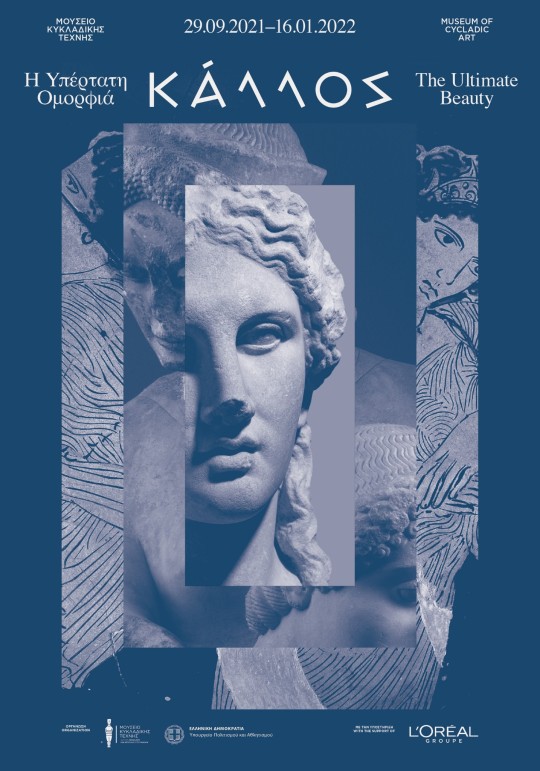
Kallos: The Ultimate Beauty, Cycladic Museum
The Museum Of Cycladic Art hosts a truly faschinating exhibition presenting the concept of ancient beauty from ordinary people to mythic heroes and monsters. The artworks' ideal beauty that has shaped our beauty standards for centuries never stops to impress us, while their subtle expression of feelings connects them with a wide net of stories which had always inspired our imagination.
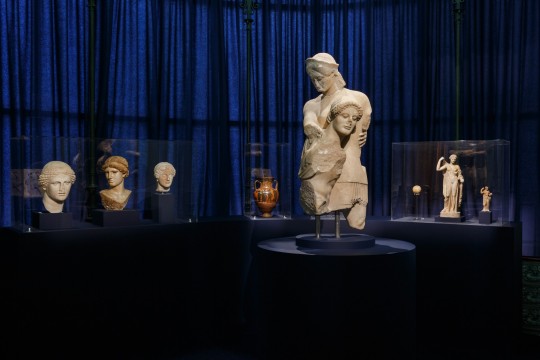
Theseus And Antiope, first half of the 5th century, Eretria
In the archaic style of kouroi, the sculptural group captures Theseus kidnapping the Amazon Antiope. Their blooming beauty makes the visitor stop by and admire them. Theseus has the confidence of a warrior, while Antiope is surprised with the young man's audacity -how could an Amazon like herself being caught off guard?
On the left, the the second bust belongs to Lemnian Athena, a roman copy of the original statue by Pheidias. Athena, the goddess of wisdom and war, looks calm, determined and imposing. Her perfect characteristics rendered her a beauty ideal for centuries.

Eros Stringing The Bow, roman copy of Lysippos' original
Lysippos was known for making three-dimensional statues, developing the body position that his predecessors had established. Eros appears slightly bending forward which creates the desire to the viewer to walk around it. Eros' child-like effort to string his bow signifies that somebody will soon be in love...
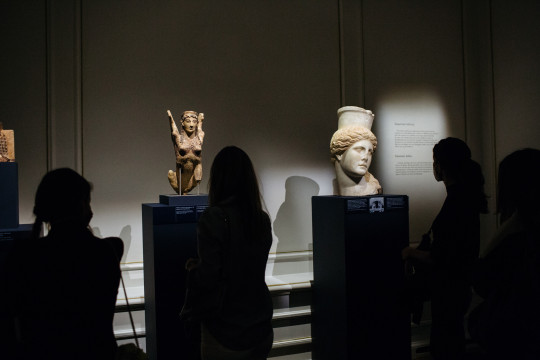
On the right, the Sphinx Of Amphipolis
Despite the fact that monsters like Sphinxes were considered frightening and ungly, ancient Greeks didn't hesitate to depict them as beautiful creatures mourning for their dead loved ones. The sensual face of the Sphinx, also, reveals a dreamy sadness for the dead that she protects.
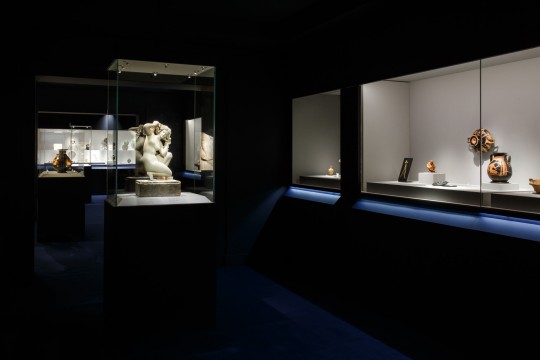
Aphrodite Of Rhodes, 1 AD century copy of a 3d BC century statue by Doidalsos
Following the tradition of the Hellenistic period, where Aphrodite was depicted naked and attractive, this statue shows her bathing, slipping her fingers through her rich hair. Her divine beauty reveals itself in a charming way.
For more information about the exhibition:
*all pics come the Museum Of Cycladic Art's website
#kallos#archaeology#art#greece#greek art#sculpture#ancient greece#statue#greek mythology#myth#classic greece#ultimate beauty#beauty#artifact#ancient artifacts#aphrodite#athena#theseus and antiope#aphrodite of rhodes#lemnian athena#eros#lysippos#sphinx#amphipolis sphinx#museum of cycladic art
12 notes
·
View notes
Text
Icarus' story is one of my favourite myths!



















Everyone forgets Icarus also flew
1. Jack Gilbert / 2. “The Fall of Icarus” by Merry-Joseph Blondel / 3. Lines attributed to Irish poet Oscar Wilde / 4. “The Fall of Icarus” by René Milot / 5. Charles Baudelaire / 6. “The Lament for Icarus” by Herbert James Draper / 7. Ilya Kaminsky / 8. “Icarus on the Rocks” by Vlaho Bukovac / 9. Nina Mouawad
9K notes
·
View notes
Text
How the Renaissance's Scholars were (Dark/Light) Academians before it was cool

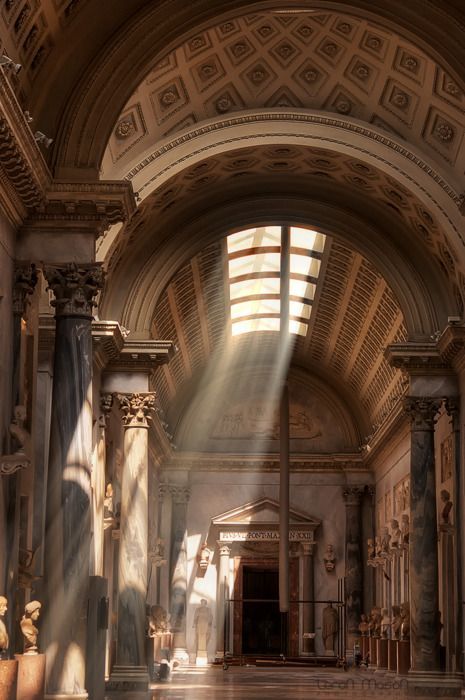
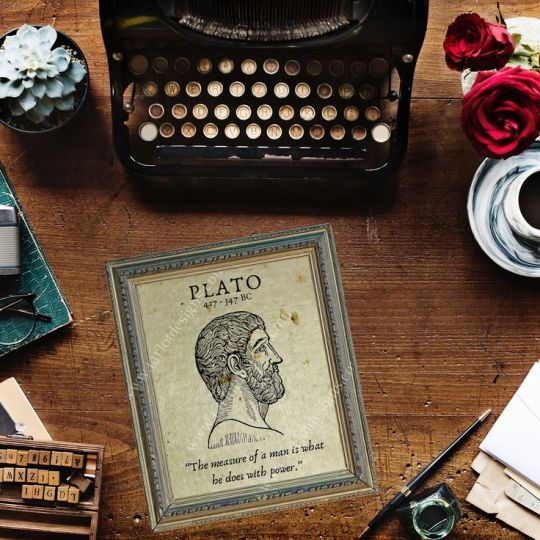

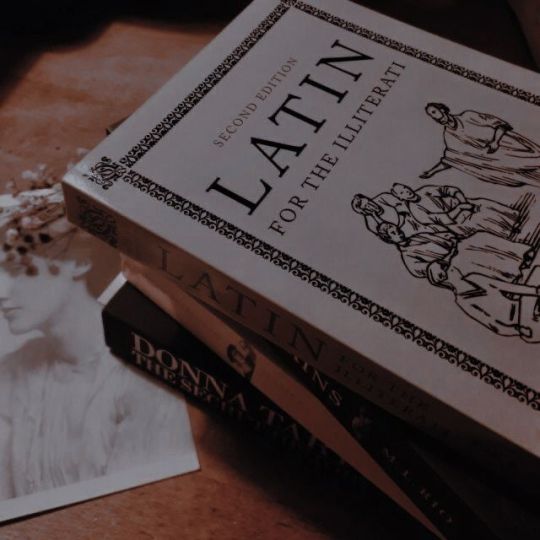


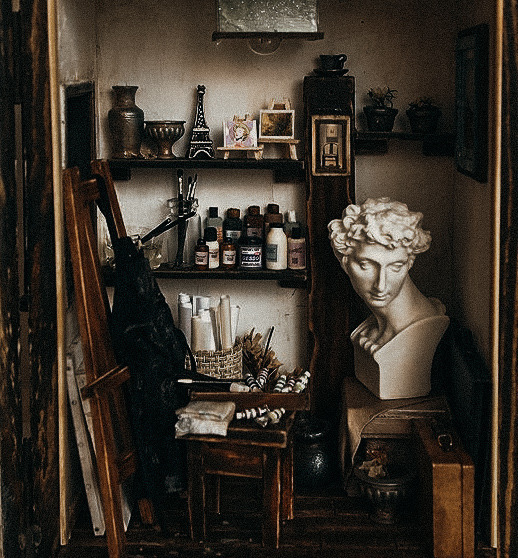


Pics belong to their rightful owners
What happened in Italy during the Renaissance? After the Fall Of Constantinople in 1453, Byzantine scholars found refugie in Italy, where some of them had already gone due to the increasing italian interest for the classics. These Byzantine scholars brought with them copies of the ancient greek works and taught them to the Italians, who were enthousiasts of the classic culture, as it connected them with their Roman origins. At the same time, rich and learned rulers, such as the Medici in Florence, were more than willing to finance the scholars to produce knowledge and copy books establishing early libraries. In a way, art and letters became fashionable. During the next centuries, Renaissance came into the visual arts resulting in the marvellous masterpieces we see today. The idea of the homo universalis was developed reffering to the inquisitive human being who occupies one self with both the practical and the theoritical side of life.
What's happening now? According to a theory, classism never ceased to inspire; after Italy, it passed to the Netherlands and the North in general. During the 18th-19th century, there's the movement of Neoclassism which also had a great effect on the arts and letters. No matter the counter-movements, like Romanticism, classic ideas shape in a great degree the modern society. It only takes us to think what we consider "humanities" -the studies that put human at the center of their interest, like litterature and history- or "humanist principles" -moral principles with roots to the classical culture.
What Dark/Light Academia has to do with this? Well, according to wikipedia Dark Academia is, among else, a subculture associated with ancient art and classic literature. Sounds a bit familliar? More specifically, it became popular during the quarantine, as young people missed their student life. In a way, classic literature works, ancient languages, paintings and sculptures have returned once more in fashion, as young people take an interest in learning and following an academian lifestyle.
So what are the habits of (italian) Renaissance's scholars that resemble a lot our ways of self expression through Academism?
*Don't hesitate to tap on highlighted words to see pics
As it's already mentioned, Academism became popular during the quarantine because of the pandemic. Similarly, before/at the begginings of Renaissance, in 1348, Italy was struck by an epidemic known as the Black Death (bubonic plague). It's believed that Black Death worked as a catalyst for the Renaissance providing people with the urge to create and live their lives to the fullest. Italian author and scholar Boccaccio survived the plague and wrote the Decameron shortly after. Decameron is a work consisting of 100 tales that ten teenagers tell one another as they're under quarantine in a villa close to Florence in order to protect themselves from the Black Death. Quarantine and ways to use our excessively big free time... Sounds familliar?
Talking about (Late) Middle Ages, it isn't a surprise that the plague emerged again in the begginings of the 16th century in Italy, though in a smaller extend. As sculptor and goldsmith Benvenuto Cellini informs us in his autobiography:
"At that time, while I was still a young man of about twenty-three, there raged a plague of such extraordinary violence that many thousands died of it every day in Rome. Somewhat terrified at this calamity, I began to take certain amusements, as my mind suggested, and for a reason which I will presently relate. I had formed a habit of going on feast-days to the ancient buildings, and copying parts of them in wax or with the pencil". (Archive.org)
Despite the fact that Cellini wasn't only interested in peaceful activities such as drawing the ancient ruins, but he also shot pigeons confirming his fame as a "bad boy", it's truly interesting how the archaeological sites offered protection against the plague (since they're open spaces that reduce the chance of getting the sickness) and how artists visited them to get inspiration and improve their knowledge. Archaeological sites being one of the first facilities to open after the quarantine, did it cross your mind to visit one?
Actually, Renaissance artists often found inspiration in ancient ruins and artifacts, as they used them as standards they had to reach and exceed, if they could. The examples are numerous. Botticeli got inspired by the graeco-roman myths and as a result he created paintings in a truly unique style, such as The Birth Of Venus, while the same happened withTitian who painted the private rooms of Alfonso I D' Este, Duke Of Ferrara, with myths such as Bacchus And Ariadne. Moreover, they re-discovered and read works that describe ancient artworks, like Plinius' Historia Naturalis, and reveal the ancient technical mastery, like Vitruvius' De Architectura, which means they re-discovered a knowledge silenced for centuries. Even in architecture, the ancient monuments helped a lot, if we think how Rome's Pantheon gave Brunelleschi the knowledge to build Santa Maria Del Fiore's Duomo, which remains an architectural achievement even today. Just think how many artists get inspired by the graeco-roman world today and share their artworks through social media or exhibit them in art galleries.
Not only the artists, but the writers too got inspired by the antiquity. Petrarch wrote friendly letters (which were also reviews) to Titus Livius, Cicero and Homer. Furthermore, he wrote Africa, an epic poem about the Second Punic War inspired by the Roman poets. This poem gave him so much fame that he was crowned with laurels in Rome in the style of classical antiquity's winners of poetry competitions! Continuing the imitatio of the classics, a book called Il Paradiso degli Alberti (Albertis' Paradise) describes the philosophical discussions of the different Italian scholars, including Coluccio Salutati, that took place at the Villa Alberti close to San Niccolo; this kind of discussions with real scholars getting concerned about a philosophical problem resemble a lot the platonic dialogues, where Socrates troubles his debaters with questions and eventually leads them to the truth. This book also gives us an idea about what the philosophers discussed, as it's important to remember that the Italian scholars didn't only imitate the classics, but aimed at producing something new, too. Classical literary works continue to inspire modern novels from Madeline Miller's Song Of Achilles to Jame Joyce's Ulysses.
Like the Academians, Renaissance scholars loved books. And in their case, we're talking of manuscripts which had to be copied by hand in order to reach you. This means that a whole "industry" of scribes was developed. Copying wasn't easy, since calligraphy was neccessary and the quality of material played an important role, too. Considering that they thought printed books a shame (at least at the beggining), scribes and copies became vital -for example, during the plague of 1450, Pope Nicolas V took with him in his villa his scribes and translators of fear he'd lose them because of the epidemic! Scholars didn't hesitate to fight over manuscripts; for instance, Niccoló Niccoli, who was always in debt because of his costly search for manuscripts, got seriously insulted when another scholar denied to lend him one of his manuscripts to copy it. Who can disagree? All for the books!
Renaissance scholars are also the ones to thank for their contribution to the development of the libraries. Their love for manuscripts lead to huge collections that turned out as libraries. Cosimo De Medici The Elder, ruler of Florence and arts' patron, formed the core of the Medici collection and founded numerous libraries, including San Marco Library which hosted Niccoló Niccoli's collection; Niccoló Niccoli died in debt and consequently his collection would have been foreclosed, if Cosimo hadn't intervered. Niccoló Niccoli was the first to conceive the idea of a public library and Cosimo fullfilled his wish. Later, under the patronage of Pope Clement VII, the Laurentian Library in Michelangelo's design was founded to host the whole Medici collection. So, next time you're at the library reading your favorite book or making research, spare a thought for these early library founders.
Renaissance scholars were fans of philosophy and they showed it. Like modern students (at least in greek high school where Aristotle and Platon are obligatory classes), they didn't hesitate to fight over who was best: Aristotle or Plato? During the Council Of Ferrara-Florence where Byzantines and Italians had gathered to find a resolution in religious matters that divided them a Plato vs Aristotle fight occured. Some time later, Pletho Gemistus (out of boredom because of a sickness that kept him secluded in his home) wrote an essay about the difference between the two philosophers and valued Plato over Aristotle; this enraged other scholars who answered with counter argument essays. Actually, Pletho was the one who brought Neoplatonism in Italy and inspired Cosimo the Elder to found the Neoplatonic Florentine Academy, where many platonists, such as Marsilio Ficino, took part aiming at reviving the ancient Academy of Plato. The Platonic Academy ran a yearly symposium (on 7th November, if anyone's interested *wink*) where they read platonic texts to honour Plato. Sounds like Dead Poets Society, doesn't it?
Finally, I'll close with a typical example of antiquity enthusiasm. After having arrived in Rome to attend lectures by the humanist Lorenzo Valla, a young man called Giulio Pomponio Leto wrote this letter to his parents who had asked him to return to his hometown: "Pomponius Laetus cognatis et propinquis suis salutem. Quodpetitis fieri non potest. Vale." ("Pomponius Laetus salutes his parents and relatives. What you ask cannot be done. Farewell"). Julious Pomponius Laetus under his new roman-ized name went on to create the Roman Academy, a semisecret society whose participants discussed about the ancient Rome from an early archaeological point of view and even celebrated Romulus' birthday. After raising suspisions for performing pagan rituals, they were hunted by the Pope, but at the end their reputation was restored. There goes Donna Tartt's Secret History.
In conclusion, the interest in antiquity and the classics is continued today in many different forms, one of them being the Academia movement. I'm not saying that we're living a second Renaissance or that we're equals to the great scholars of the era, but that we have a similar mindset and share the same enthusiasm. It's quite exciting to think that classic literary works, ancient philosophy and art are still engaging and have never stopped inspiring humanity.
*Besides wikipedia's aid, my main source for this post is Umanesimo by Nicola Festa, which I read in its brilliant greek translation.
#academia#dark academia#light academism#light academia#dark academism#academism#renaissance#italian renaissance#italian scholars#plato#aristotle#neoplatonism#florence#rome#cosimo de medici#florence academy#roman academy#petrarch#boccaccio#black death#pandemic#classics#classic literature#classic art#botticelli#library#books#booklover#books & libraries#titian
82 notes
·
View notes
Text
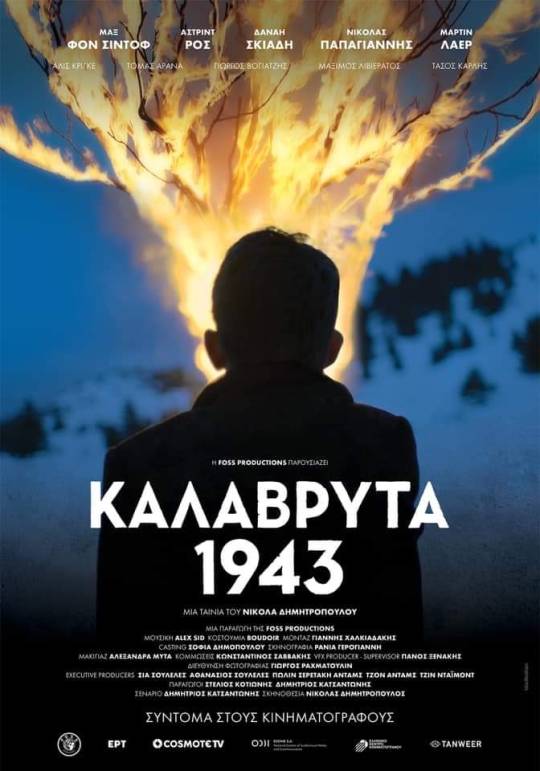
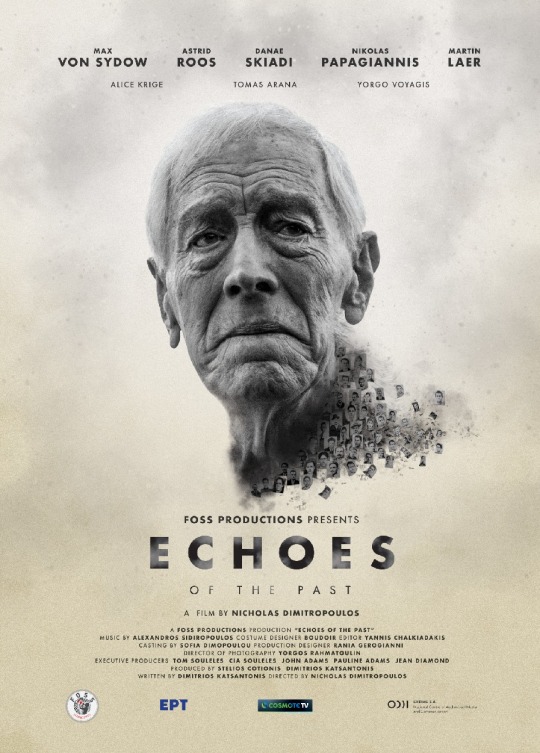

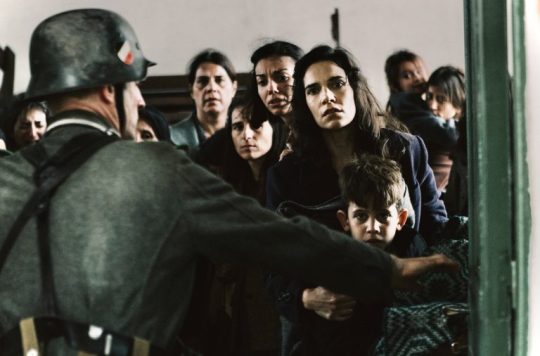


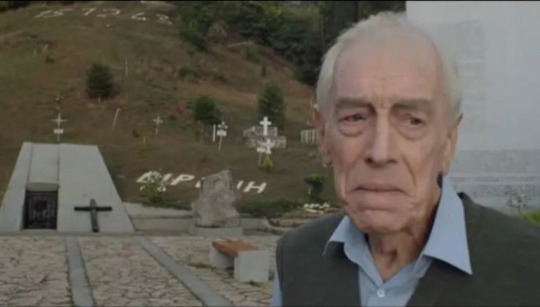

Kalavryta 1943 ~ Echoes Of The Past
What do you know about the massacre at the greek village of Kalavryta by the Nazis in 1943? One of the worst crimes during the WWII that killed 500 up to 800 people and became a trauma for the ones that survived.
After the Greek Resistance had killed 78 German soldiers who were taken as prisoners, the Nazi army executed all men and older boys from 12 years old and on (about 500 people!) and burned the village as a revenge.
I've been to Kalavryta several times, thanks to its close distance from my village.
How can I describe the heartbreaking feeling that gets me when I visit the Museum's room where the photographs of all the victims are exhibited? Each one of them looks at you in the eye and I imagine them whispering "don't forget me, don't forget what happened to us". Even though, the ones responsible never payed about it; and I don't mean a compesation to the greek goverment, but the Nazis that commanded and executed this terrible deed got mysteriously "disappeared" after the war and consequently never stood in a trial.
How can I describe the deadly sense I get in the complete silence of Place Of The Memorial where hundreds of white tombs stand facing the nature that unfolds in front of them under the hill? "NO MORE WARS" is written with big, white letters on the grass.
However, the detail that always intrigued me and I'd turn my head to its direction at every visit is the church's burned clock which is stopped at the time of the vilage's burning. Images of terror caused by the emerging flames spontaneously pop up into my mind.
Recently, a film about the Kalavryta massacre (Kalavryta 1943/ Echoes Of The Past) has premiered with Max Fon Sydow playing his last role as a Greek who was a child during the massacre and now tells his story to a German lawyer who on behalf of the German Ministry Of External Affairs aims at avoiding Greece's demand for compesation -she'll soon change her mind.
Despite the fact that it takes some artistic liberties, the film is interesting to watch, as it visualizes one of the worst crimes in war history and therefore the tears are guarenteed. I'll go in to some SPOILERS FURTHER DOWN, so if you haven't yet watch it, stop reading here! Here's the trailer:
youtube
I've got to mention Von Sydow's superb acting; his whole demeanor revealed the sadness and the pain he still feels after so many years from this traumatic experience. Even the silent moments, like the one towards the ending where he visits the Place Of The Memorial, are full of emotion.
The other actors were mostly solid, too. I personally loved Danae Skiadi as the protagonist's mother, as she really showed anxiety for her familly's safety, while her maternal instict lead her son and herself to survival. I'd go as far as to say that she bore a big part of the film herself! The protagonist's father, Nickolas Papagiannis, was also interesting to watch, playing a brave guerilla, determined to save his family, even if it means that he'll sacrifice himself. The boy playing the younger self of the protagonist played quite well too, showing both the carelessness of his age and the shock that stigmatized him forever.
The most moving scene for me was the separation of the familly at the school, where the Germans had commanded all the villagers to go promising that they won't harm them; the 12 year old son and the father are violently separated from the mother and the protagonist. The mother tries to keep her sons with her, but she only saves the one. The parents look at each other for a mere moment, as soldiers stand between them. They began to suspect that not everyone will survive and this might be the last moment they see one another.
Definitely, the execution scene was highly emotional. Fear being in the air, all the men's faces were in shock. A watch falls from the father's pocket and its sound tik-tak is heard counting the seconds to the execution; the shootings burst and the clock's sound is ceased.
Nonetheless, the drama hasn't yet finished. The most heartbreaking scene comes afterwards, when the surviving women head to the hill only to find their husbands, brothers and sons violently executed. Their screams and wails were being heard the whole nignt, as they were searching for their dead loved ones with the laterns' help, like a scene from Hell.
Whilst the film gets a "yes" from me, here are some sides of it I didn't like: 1) the Germans should be speaking German, not English, it wasn't realistic at all, while Greek villagers from the 40s shouldn't know English; 2)the lamentation song that played during the execution scene wasn't fitting and ruined the climax; 3)In Greece, there's a fuss about the Austrian who is supposed to save the women and children from the burning school, as it isn't certain that he historically existed. In my opinion, it isn't bad to follow that storyline, since there are some testimonies that mention him. However, it shouldn't be given much weight on him, like having the lawyer search for his wife, because the focus has to be on the victims. Despite the fact that there are films with a more harsh depiction of the Germans, this film cannot be blamed for trying to make excuses for them or anything: the trauma and the emotion are too well expressed to accuse the film for something like this; 4)however, what we can blame the film for is the a bit flat plot, considering that it could have gone deeper into the characters and their relationships.
#kalavryta#kalavryta 1943#echoes of the past#max fon sidow#greek movie#greek film#cinema#greek cinema#film#world war 2#holocaust#war crimes#history#modern history#greek history#wwii#wwii history#anti war#massacre#cinephile#history drama#Youtube
3 notes
·
View notes
Text
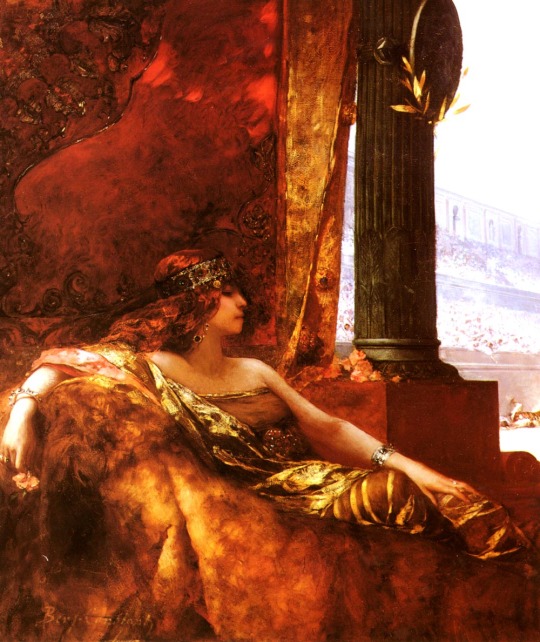


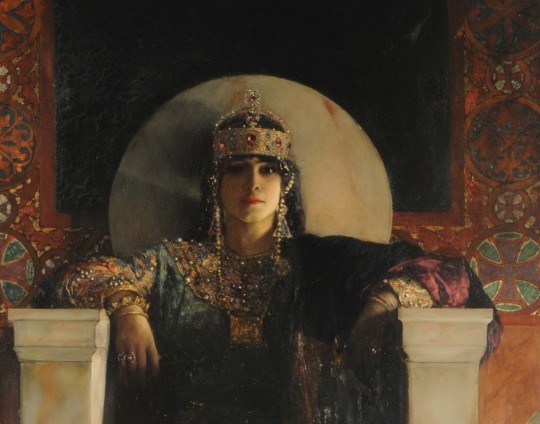


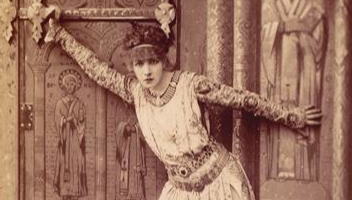

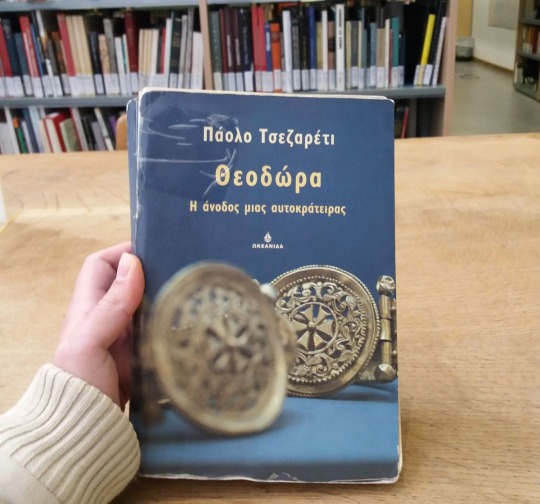
Bottom left photo from www.byzantium1200.com
"Royal purple is the noblest shroud"
Who hasn't heard of Theodora, the Hippodrome's actress who unexpectedly became the Roman Empress?
There are numerous books about her and a couple of films (I'D LOVE IT, if there was a modern one with a strong lead -it could be the new got!). I recently read Paolo Cesaretti's book Theodora and it's certainly one of the best books I've ever read: it isn't a novel, but Cesaretti's colorful language doesn't allows you to let it down. Cesaretti helps you understand Theodora by seeing the bigger picture of her era; nonetheless, he brings her more close to you than ever. Through this book, a whole new world is opening up to you with an interesting figure in the center of it, Theodora.
Here's a brief sum up of her story:
Theodora lived in the first half of the 6th century AD. She is quite famous today because of Procopios' account of her. Procopios was Emperor Justinian's official historian, but he also published a book called Secret History in which he judges the emperors and mostly Theodora for her humble roots.
She was the daughter of the Hippodrome's bear trainer. Hippodrome was something like the Roman arenas and the modern stadiums. Different Factions who had many fans, like today's football fanatics, held an important role to the society. So, when Theodora's father died, it was important that a Faction (aka team) would hire her mother's new husband or else poverty would hit them. Thedora's mother sent her daughters to beg the Green Faction to accept him in front of the whole Hippodrome. They fell on their knees and begged. Pretentious silence followed from the Green Faction's part... everything seemed hopeless in this moment of complete disgrace. However, the Blue Faction accepted their request and took them under their protection. This early moment in Theodora's life was quite significant, teaching her how to turn an unexpected situation to her side.
Theodora grew up and became an actress, which meant she was playing in comedies, such as pantomime. Nonetheless, actors were at the bottom of the social hierarchy because they had to pretend they were someone else -for example a murderer, a cheated husband or a seductive woman- roles blameworthy in a conservative society. Procopios disapproves Theodora for her provocative, nude performances connecting them with her immoral character. Moreover, it was common for actresses to work as concubines, too, in spite of the fact they weren't actually prostitutes. Theodora had many lovers and made a name for herself. Certainly, the orgies Procopios describes have many exaggerations. Procopios' negative look on Theodora has to do with the ancient belief that a woman should not enjoy sex and her only purpose was to become a mother out of it.
Theodora desperately wanted to become a domina, a lady, to be socially secure and financially stable. She only needed the right man... and she found him: his name was Hecebolus and he was a state's official in Pentapolis, Cyranaica (north Africa), where she followed him, after he promised that he'd marry her. Hecebolus turned out to be a liar and soon broke up with her, leaving her all alone far away from her city, Constantinople, and poor. The whole plan with Hecebolus seemed a failure, like the desperate kneeling at the Hippodrome some years ago; similarly, Theodora managed to get the best of the situation. Actually, if it weren't for the adventure with Hecebolus, it is doubted that she'd even get the throne. And that's because Theodora changed, she was completely transformed. She found refugie at the local Church of Alexandria, where she got inspired by the Myaphysites, christian heretics, who persuaded her to quit her old life and get a respectful living.
All Theodora wanted was to return to Constantinople and begin her life all over again. For this purpose, she needed all the help she could get; a dancer called Macedonia, who was at the same time a spy for Justinian (who was helping the Emperor with the governance at the time), gave her a letter of recommendation and told her that Justinian would be willing to help her. When Theodora presented at the Palace, Justinian fell in love with her. Was it her beauty that blinded him so much? Or did he see in her a future Empress, street-smart, wise when it comes to common people and familliar with the east part of the Empire thanks to her journeys? Theodora was all these.
In order to achieve Theodora's enthronement, Justinian changed the law that forbid actresses to marry men of higher social status. This was only the first law in support of women that the imperial couple woud establish. As soon as they rose to the throne, Theodora took care of her women subjects by passing laws that financially protected the widows and rehabilliated the prostitutes. This is a modern day feminism only on the surface; Theodora aimed at streghtening woman's role in society by putting her at the center of the familly. It's through her role as a mother and a wife that she would be equally powerful with man.
Whilst Theodora's laws supported marital affection, she planned many weddings with her ex-collegues and Justinian's officers making this way a strong circle of protection she could control around her and her husband.
Theodora's desire to maintain the throne shows up most clearly during the Nika riots (Nika means Win and while it was often adressed to the Emperor, it now meant the people's victory), only five years after the beggining of their rule, in 532. Not being able to afford the taxes and the measures of thrift, Constantinople's peasants with the leadership of the Factions revolted against Justinian. Constantinople was under destruction for 5 days and Justinian had no idea what to do. The Factions had already voted a new Emperor at the Hippodrome. The only rational course of action was fleeing. Oh, their plans were to end before they even begin! But Theodora spoke out surprising everyone in the council and her words changed the course of history:
"It is impossible for a person, having been born into this world, not to die; but for one who has reigned it is intolerable to be a fugitive. May I never be deprived of this purple robe, and may I never see the day when those who meet me do not call me empress". And finished: "As for me, I agree with the adage that the royal purple is the noblest shroud."
For once more, she inspired Justinian and he commanded the only realistic solution: kill everyone in the Hippodrome. Kill them all. (Should I say when you play the game of thrones you win or you die?). Now Justinian owed his throne to Theodora, the spouse that was given to him by God, as her name implies. Theodora owed nothing more to Justinian, they were really equal.
One might say that Justinian and Theodora represent two different tendencies. Justinian was inspired by the Roman Empire, its immense grounds and imperial ideas. That's why he did everything in his hand to regain the West parts of the Empire which were occupied by Goths, especially Rome, and he impressively made it -even if his achievement proved to be short-lived. Having this aim in mind, Justinian promoted a reconciliation with Rome's Pope. On the other hand, Theodora wished to streghten the Miaphysites who had once helped her, so she turned her attention to the East part of the Empire where the striking population were Miaphysites. Theodora's intentions came into conflict with Justinian's, since the Pope and the Western population were Dyophysites. So, they once yielded to the Pope's side, once to the Miaphysite's and sometimes there was a compromise between the two. But they both respected each other's goals: Theodora was patient when they had to approach the Westerns and Justinian was tolerant towards Miaphysites. Because Justinian and Theodora didn't do anything, separately, without each other.
Justinain believed in One Church, One State, One Empire, following the Roman ideas. No matter their differences in a theological level, Theodora was equally faithful to this motto, knowing that it secured their rule. Theodora was often harsh to her (potential) enemies, staying true to her words during tne Nika revolt. She deposed a Pope for not obeying to her, eventually killed Constantinople's governor after cleverly catching him conspiring against Justinian, while she didn't hesitate to damage the general who had achieved all Justinian's military victories for fear he could overthrow them. Theodora knew the cost of the royal purple and she wasn't willing to die without it.
Both Justinian and Theodora wanted to leave something behind them, so they supported an infrastrucure development program which resulted in architectural achievements such as Hagia Sophia, whose dome seemed to be suspended from heaven by a golden chain. In fact, there were many restorations and new buildings, not only in the capital. However, the only depiction of Theodora that survives is at the mosaic of Saint Vitale in Ravenna. She appears luxouriously dressed accompanied by her Court. She looks calm and detached, without any hint to her past as an actress and the sexual liberty that followed it. She's a domina, master of herself and everything around her, terrifying to her enemies and generous to her proteges. Theodora's penetrating gaze only implies the wisdom she gained through her familiarity with the roles both from the theater and the politics' stage. She lived in a world that was slowly dying, the antiquity, and at the same time was regenerating in the Middle Ages. Transformation had always been a key-part of her story and with her death she was inevitably transformed into the sphere of myths and legends.
#byzantium#history#roman history#byzantine history#theodora#theodora empress#empire#byzantine empire#greek history#art#paolo cesarreti#roman#late antiquity#middle ages#royalty#hippodrome#rugs to riches#dark royal core#dark royalty
138 notes
·
View notes
Note
hello, its @thebooksofjulie thank you so much for your follow back!! i adore greek history :) and your blog is amazing!
Thank you so much, I'm trying my best, so it means a lot! Your blog is amazing, too. I love art history, so your posts are pure gold!
1 note
·
View note
Text




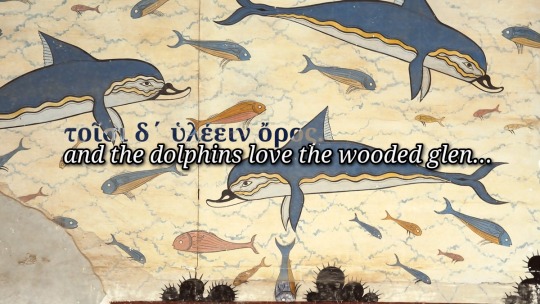
Poem about an eclipse by the 7th BC century poet Archilochus
Archilochus puts those words in the mouth of a father talking to his daughter, but it's actually him consoling his sister for the unexpected loss of her husband in a shipwreck. In essense, he advises her not to despair, since nothing is unexpected in this world -even death is part of it. For some reason, this poem fits well the current situation, the pandemic, considering that it was pretty much unexpected; but don't lose hope, everything is possible!
"Nothing is unexpected, nothing is foresworn and
Nothing amazes now that father Zeus the Olympian
veiled the light to make it night at midday
even as sun was shining: so dread fear has overtaken men.
From this time on everything that men believe
will be doubted: may none of us who see this be surprised
when we see forest beasts taking turns in the salted field
with dolphins, when the echoing waves of the sea become
Dearer to them than the sand, and the dolphins love the wooded glen…"
Translation by www.sentetiaantiquae.com
#poem#poetry#poet#ancient greek poetry#archilochus#eclipse#dolphins#animals#nothing is unexpected#unexpected#lyric poetry#archilochus poems#ancient greece#ancient greek language
8 notes
·
View notes
Text
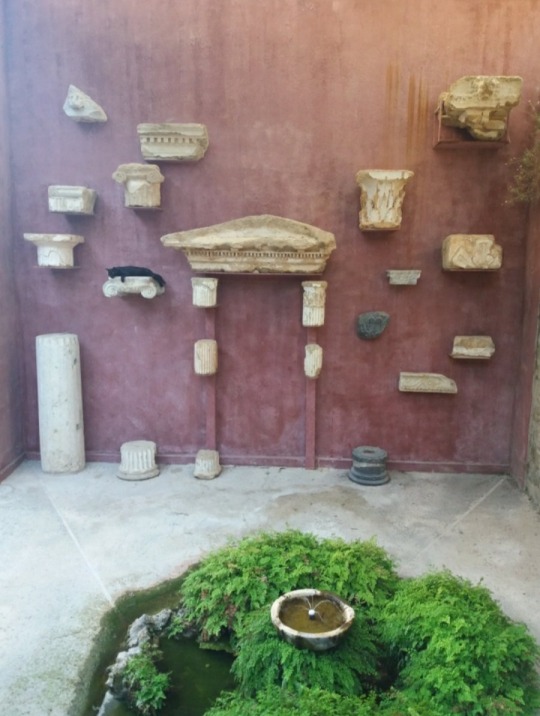
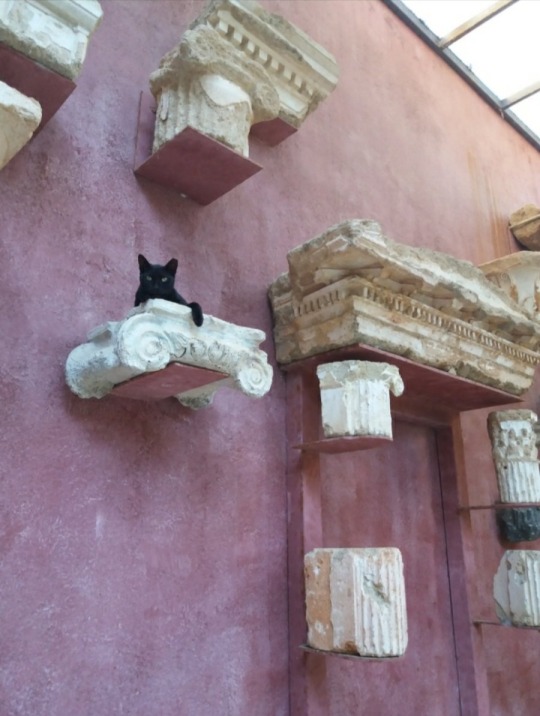




A gorgeous cat welcomes me to the entablature and the capitals of a third century BC ionic temple, in the garden of the Archaeological Museum Of Rhodes.
#cat#archaeology#art#greece#greek art#ancient greece#ancient temple#rhodes#archaeological museum of rhodes
1K notes
·
View notes
Photo

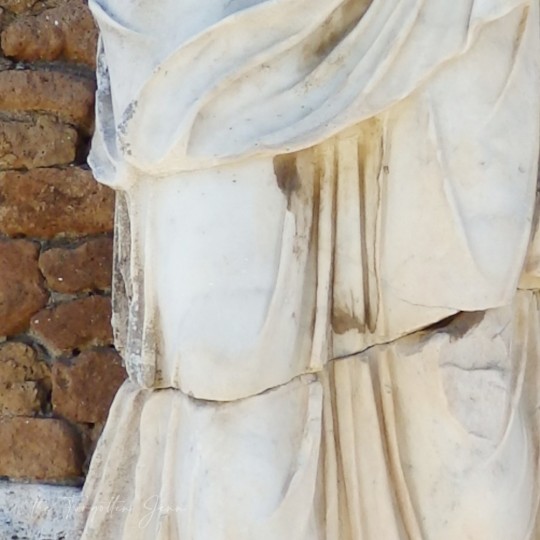
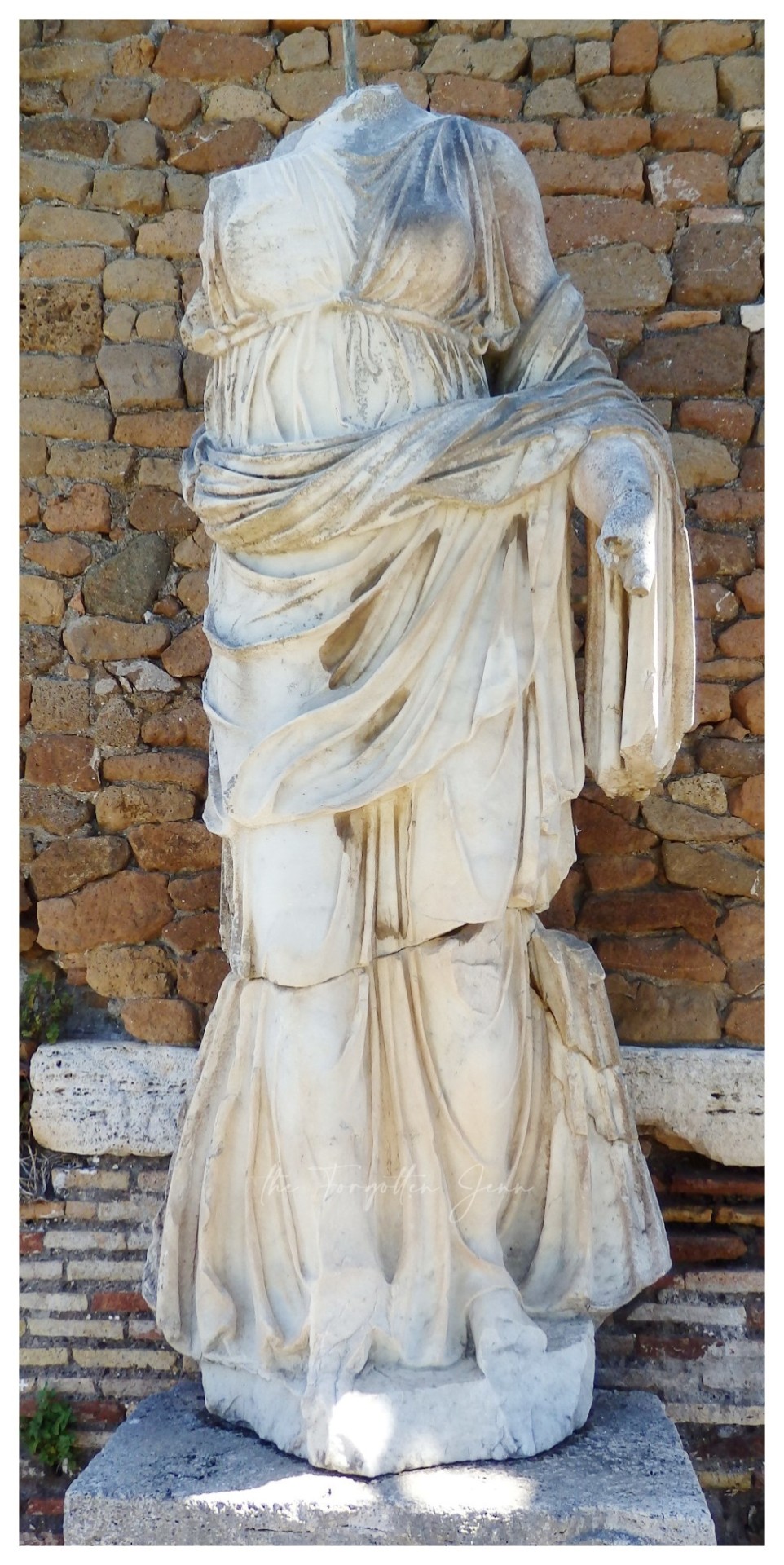

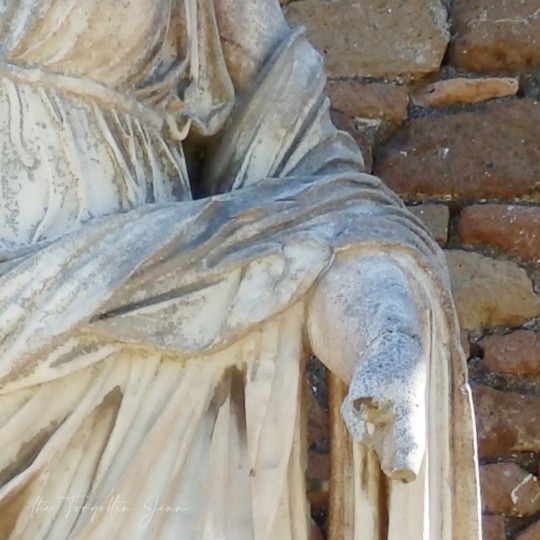
Statue of a woman showing the beautiful folds of her dress and stola.
83 notes
·
View notes
Text
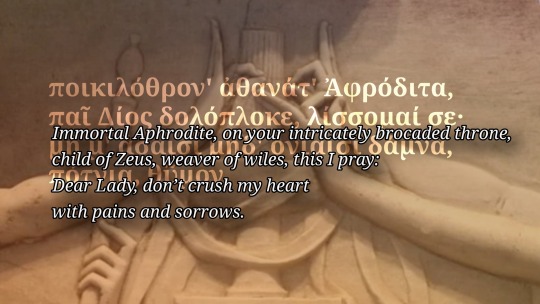


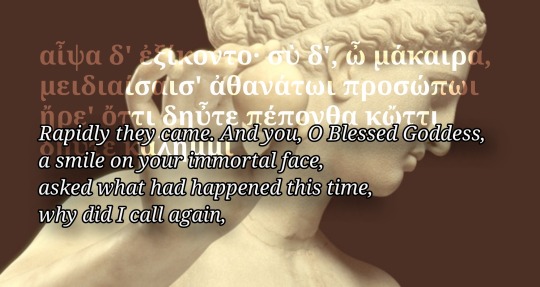
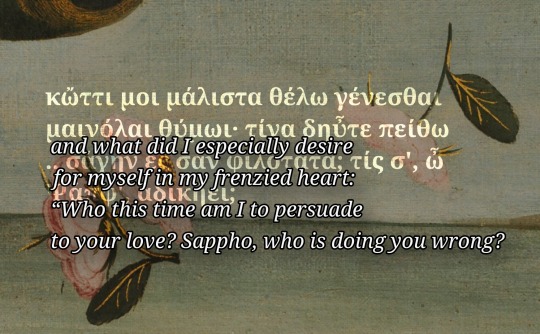
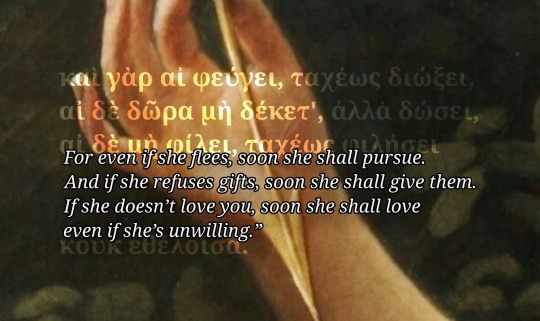
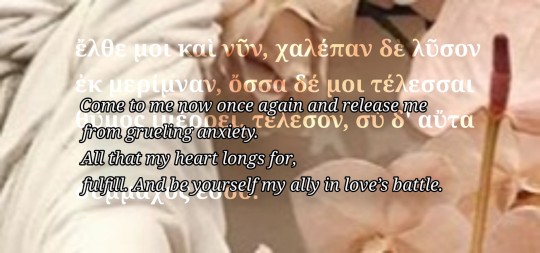
Sappho poem
Immortal Aphrodite, on your intricately brocaded throne,[1]
child of Zeus, weaver of wiles, this I pray:
Dear Lady, don’t crush my heart
with pains and sorrows.
5 But come here, if ever before,
when you heard my far-off cry,
you listened. And you came,
leaving your father’s house,
yoking your chariot of gold.
10 Then beautiful swift sparrows led you over the black earth
from the sky through the middle air,
whirling their wings into a blur.
Rapidly they came. And you, O Blessed Goddess,
a smile on your immortal face,
15 asked what had happened this time,
why did I call again,
and what did I especially desire
for myself in my frenzied heart:
“Who this time am I to persuade
20 to your love? Sappho, who is doing you wrong?
For even if she flees, soon she shall pursue.
And if she refuses gifts, soon she shall give them.
If she doesn’t love you, soon she shall love
even if she’s unwilling.”
25 Come to me now once again and release me
from grueling anxiety.
All that my heart longs for,
fulfill. And be yourself my ally in love’s battle.
Translation by JULIA DUBNOFF (www.uh.edu.com)
#sappho#poem#poetry#lyric poetry#ancient greek poetry#poetess#aphrodite#love#love poem#romance#unfullilled love#ancient greek#goddess#greek mythology
71 notes
·
View notes
Text
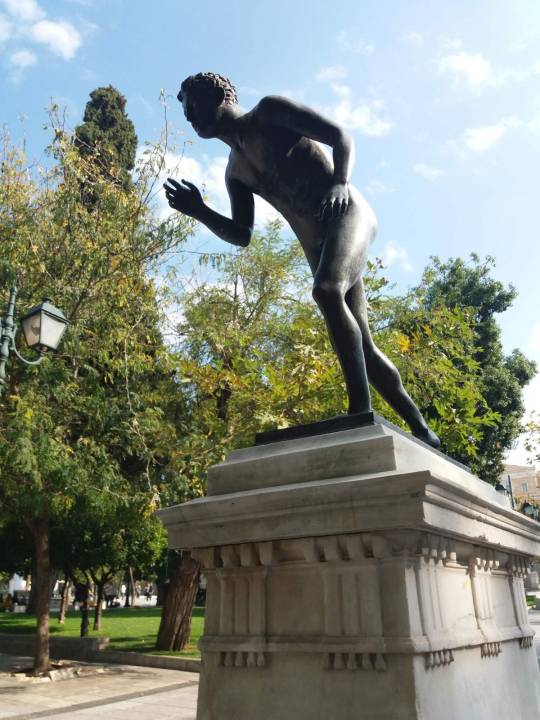
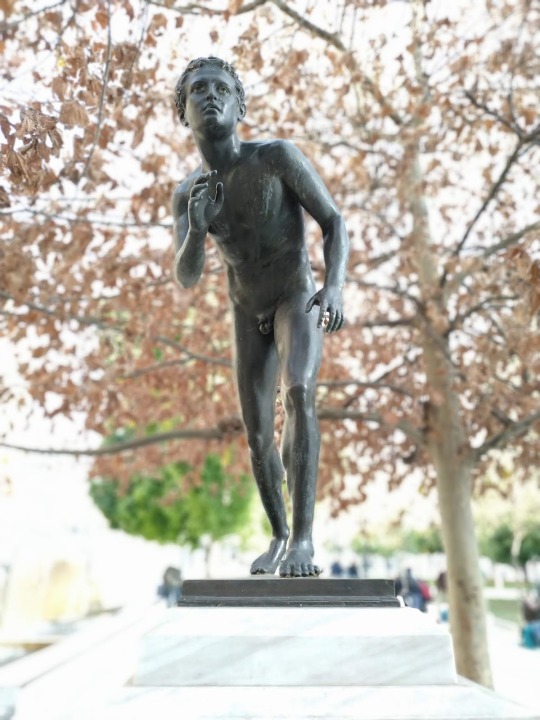
The Wrestler, Syntagma Square Athens: a wrestler ready to attack to his opponent, a moment before the fight begins.


Hermes While Resting, Syntagma Square, Athens: Hermes, exhausted, makes a stop near the dense tree canopy.
The statues were offered as a gift to the municipality of Athens by lord Bute. They're copies of statues by Greek artists found in Pompeii and Herculaneum, two cities destroyed by the explosion of Vesuvius. They're the first bronze statues of modern Athens.
Source: athenssculptures.com
#art#greece#greek art#sculpture#ancient greece#statue#pompeii#herculaneum#syntagma#hermes#hermes while resting#wrestler#bronze#modern greece
13 notes
·
View notes
Text
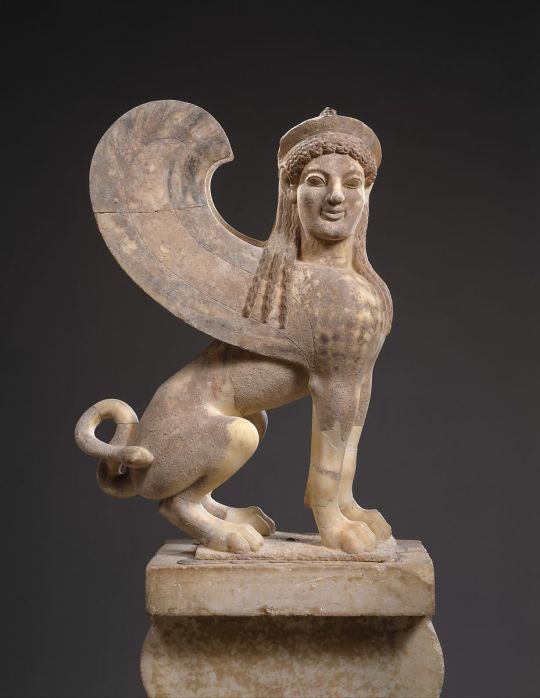
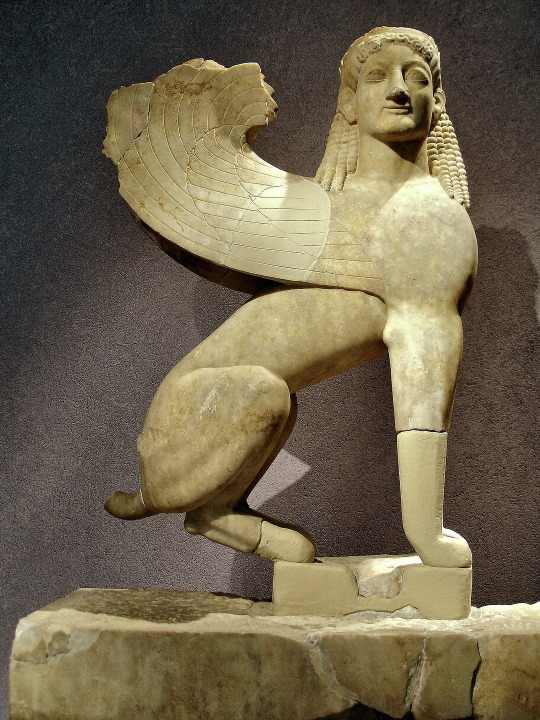

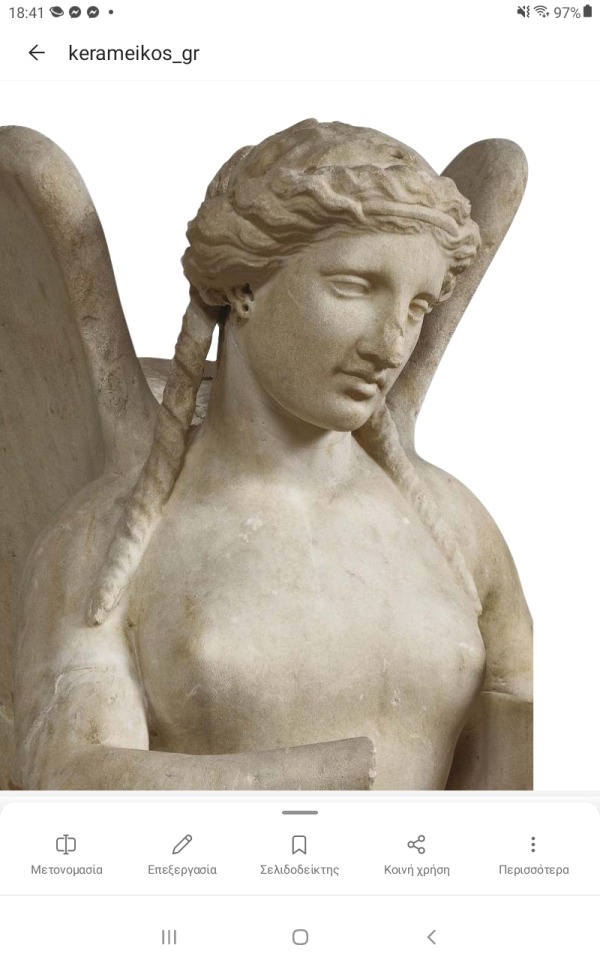
Sphinxes and Sirens were guarding the tombs in ancient Greece. While the Sirens seem to mourn the dead, the Sphinxes turn their head to face the passer-by and remind him the gloomy Underworld where they come from.
Happy Halloween everyone!
#siren#sphinx#halloween#happy halloween#archaeology#greek art#sculpture#statue#ancient greece#greek mythology#art#funerary art
21 notes
·
View notes


